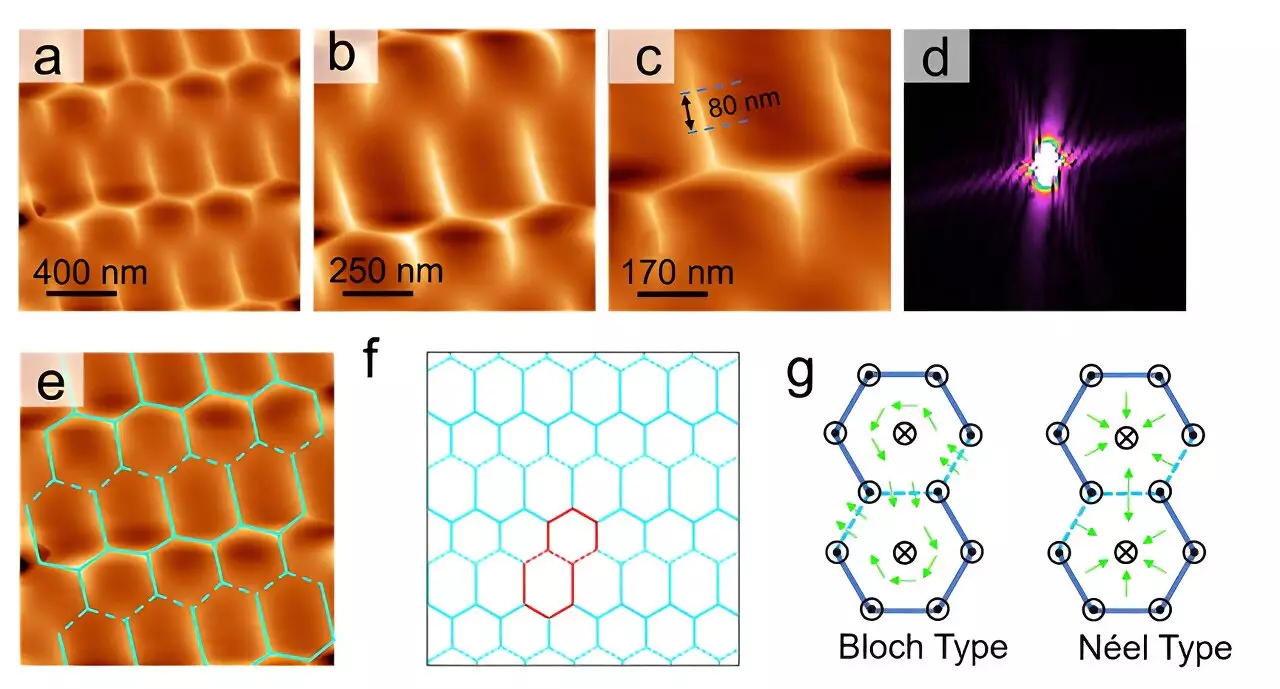Recent strides in material science have led to groundbreaking discoveries regarding kagome lattices, a unique geometric configuration of atoms. The intricate arrangements found in these lattices make them particularly interesting for researchers, as they exhibit phenomena such as topological magnetism and an emerging interest in high-temperature superconductivity. These developments not only broaden the frontier of condensed matter physics but also open avenues for promising applications in quantum computing technologies.
The Pioneering Study
A collaborative effort from researchers in China has made a significant leap in our understanding of the intrinsic magnetic structures within kagome lattices. Utilizing advanced techniques, including magnetic force microscopy (MFM) and electron paramagnetic resonance spectroscopy, the research team successfully mapped the magnetic properties of Fe3Sn2, a binary kagome single crystal. Their findings, published in *Advanced Science* on August 19, reveal a newly discovered magnetic lattice structure characterized by a distinct broken hexagonal formation, a result of the interplay between hexagonal symmetry and uniaxial magnetic anisotropy.
Led by Prof. Lu Qingyou and in partnership with Prof. Xiong Yimin, the research team meticulously investigated the magnetic configurations that exist within their sample. Hall transport measurements provided compelling evidence of a newly identified class of spin configurations that defy previous conventional wisdom. These configurations are more nuanced and complex than the formerly assumed spin-glass state, indicating that understanding magnetic ground states in materials like Fe3Sn2 is more intricate than previously believed.
Another cornerstone of this study is the revelation regarding the magnetic phase transition of Fe3Sn2. Earlier studies suggested a first-order transition; however, the new findings propose that a second-order or a weak first-order phase transition is more accurate. This critical insight not only revises the temperature-dependent behavior of the material but also stipulates that an in-plane ferromagnetic state is the ground state at low temperatures. The team’s development of a novel magnetic phase diagram serves as a framework for further research and exploration.
Quantitative data derived from MFM analyses highlighted significant out-of-plane magnetic components at lower temperatures, which underscores the complexity of the magnetic interactions at play. By employing the Kane-Mele model, the researchers explained the intriguing opening of a Dirac gap, thereby providing answers to longstanding questions about these systems and dismissing earlier hypotheses surrounding the emergence of skyrmions under low-temperature conditions.
The implications of this study are vast, positioning it as a pivotal moment for further explorations into topological magnetic structures. As the world gears up for advances in quantum computing and high-temperature superconductivity, the insights gained from this research lay a solid foundation for future discoveries. The unique properties of kagome lattices, combined with a deeper understanding of their magnetic behavior, could equip scientists with the tools needed to push boundaries in next-generation technologies. This research not only enriches our comprehension of condensed matter physics but also reinforces the potential of kagome lattices as crucial players in the future technological landscape.

